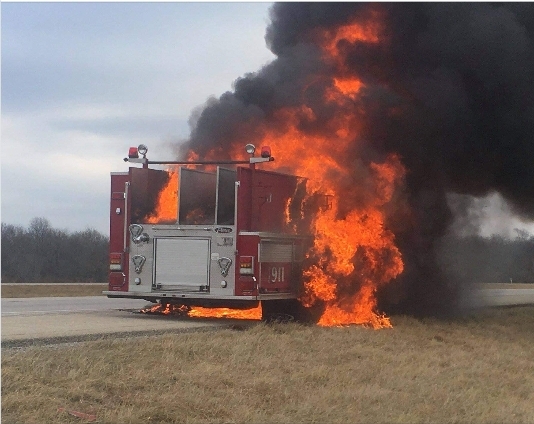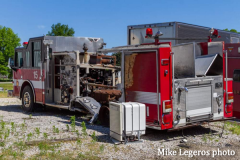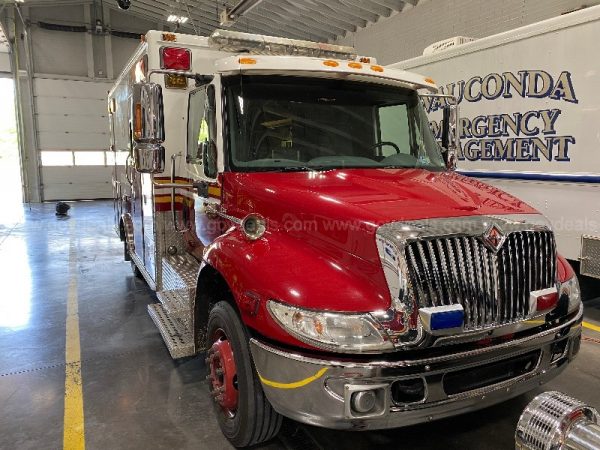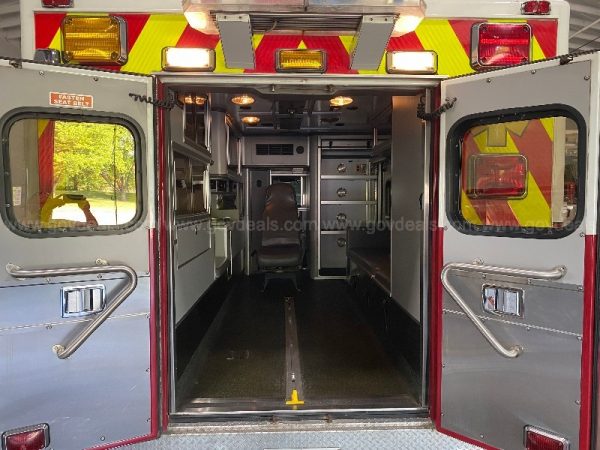This from Danny Nelms:
That engine from Normal Illinois that caught fire a few years ago was found and posted on Facebook.
From Mike Legeros: Parked in Alexis, IL, around the corner from the Alexis Fire Equipment plant buildings. Former Normal, IL, pumper, apparently victim of a vehicle fire. Legeros photos.



































